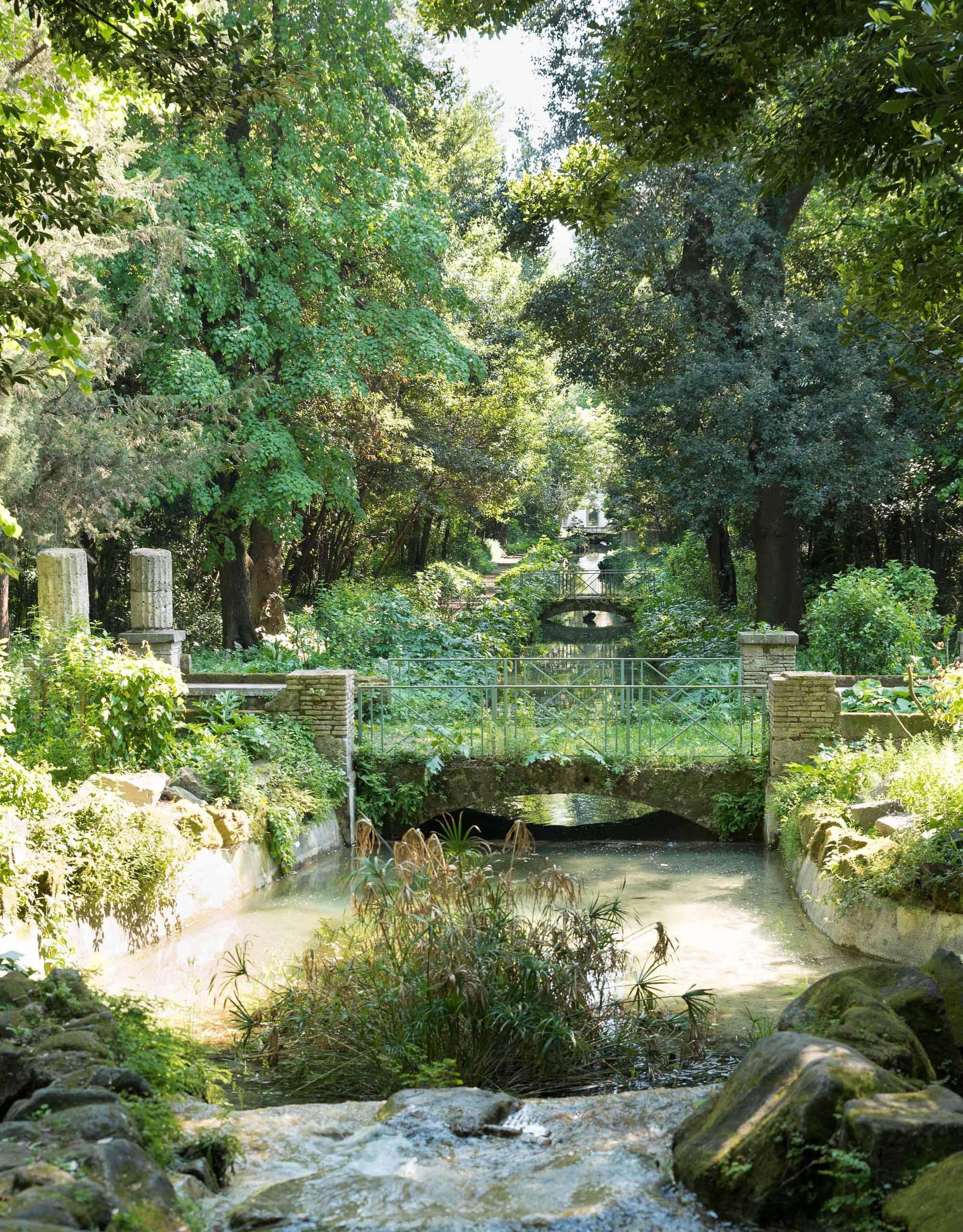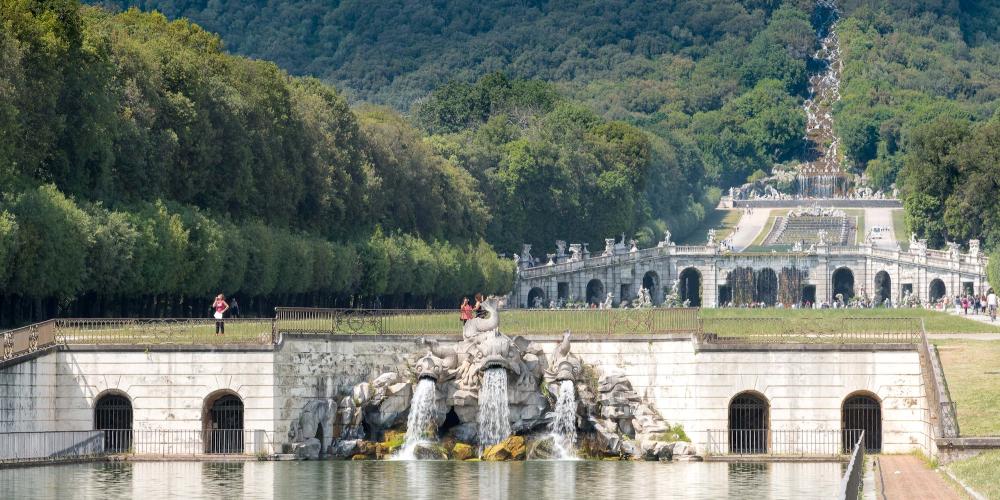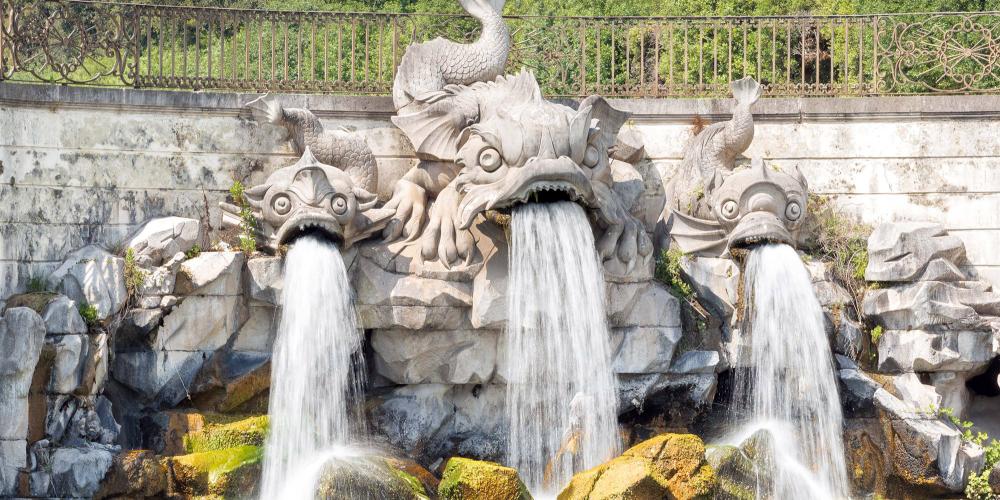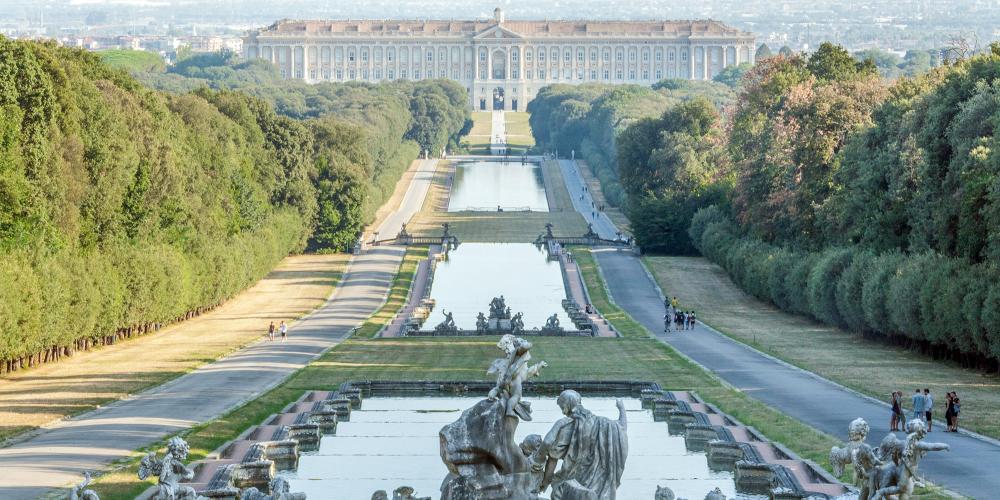Tour the Royal Park and Gardens

Construction of the park, including delimiting the different sections and planting of the first plants began in 1753, simultaneously with the construction of the Carolino Aqueduct, whose waters from the slopes of Mount Taburno, would have fed the fountains of the royal gardens.
The Park—over 3 kilometres (2 miles) long and encompassing an area of 120 hectares (300 acres) comprises two main gardens; an Italian-style baroque garden with an artificial lake, grottoes, and tiny fortress—and an English garden, designed by landscape architect John Graeffer in the 1780's, with rare botanical species, ponds, creeks, and an ensemble of “Romantic ruins”.
The formal garden, as seen today, is only a partial realisation of what Luigi Vanvitelli conceived. At his death, in 1773, the aqueduct had been completed but no fountain had yet been built. The works were completed by his son Carlo, who, although simplifying his father's project, was faithful to it, preserving the compositional rhythm and layout of fountains, water basins, meadows and waterfalls.

The park starts from the back facade of the palace, flanking a very long straight canal with fountains and cascades. The fountains and cascades, each fill a vasca (basin), with architecture and hydraulics by Luigi Vanvitelli at intervals along a wide straight canal that runs to the horizon. The gardens are filled with many sculptures of figures and theatrical scenes from classical Antiquity.
Visitors can enjoy the park and gardens in many different ways including walking, jogging, biking, by horse carriages, and segway.






